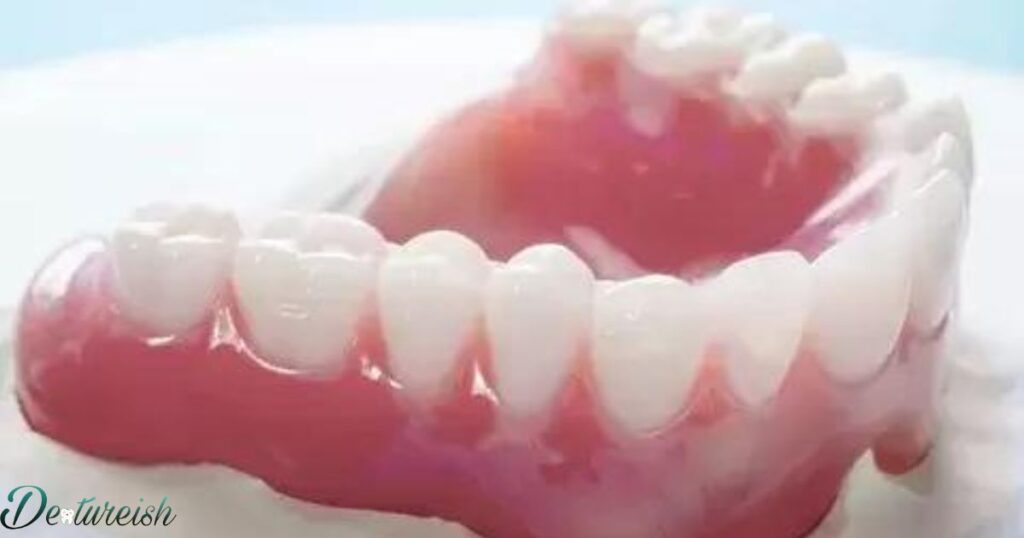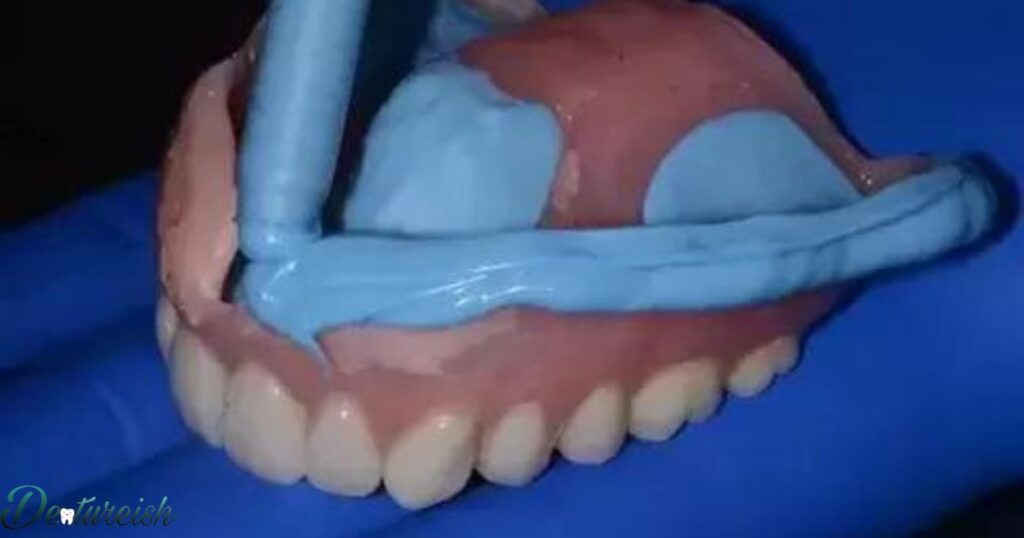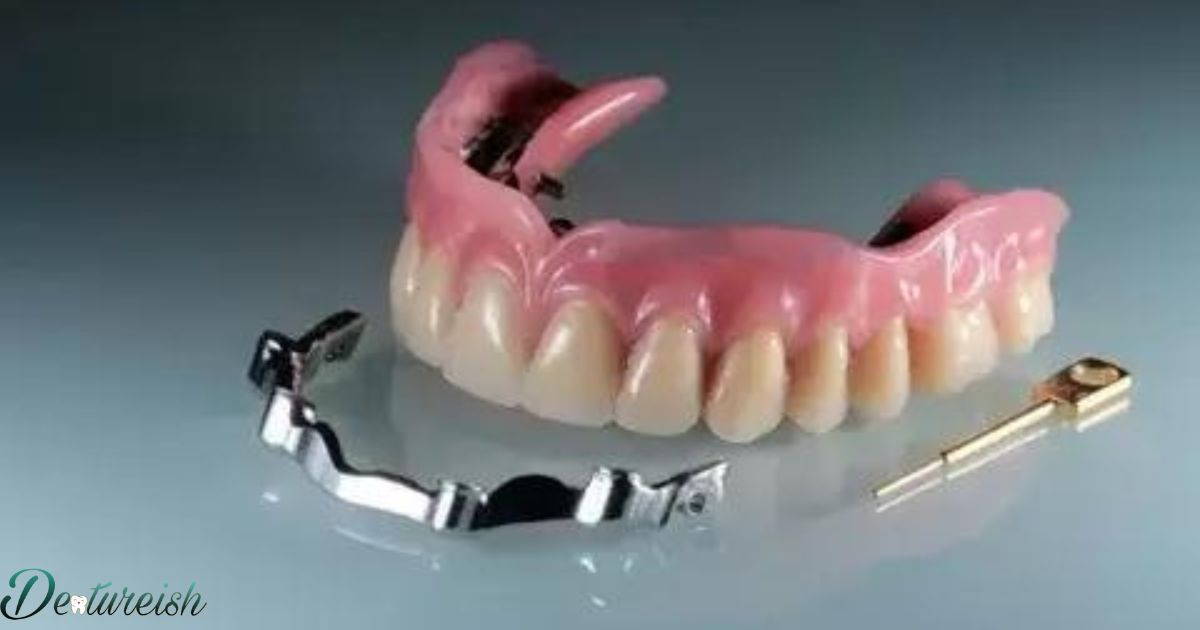A partial denture is a removable dental prosthesis used to replace missing teeth within a patient’s mouth. It consists of artificial teeth attached to a framework that clasps onto the remaining natural teeth for support. Partial dentures help restore oral functionality, improve aesthetics, and enhance overall dental health.
A partial denture is a removable dental appliance designed to replace missing teeth. It consists of artificial teeth attached to a gum-colored base, often made of metal or acrylic. Partial dentures are custom-made to fit a patient’s mouth and provide improved aesthetics and functionality for individuals with some natural teeth remaining.
Making a partial denture involves several steps. First, a dentist takes impressions of the patient’s mouth to create a mold. Then, the partial denture is crafted using materials like metal and acrylic, customized to fit the patient’s unique oral anatomy. Finally, adjustments are made to ensure a comfortable and secure fit for the replacement teeth.
Aking Impressions For Partial Dentures
Creating impressions for partial dentures is a crucial step in the dental process. Dentists use a soft and moldable material to take an impression of the patient’s mouth. This material captures the unique contours and shape needed to craft personalized partial dentures.
After taking the impression, the dentist sends it to a dental laboratory. Skilled technicians use the impression as a guide to construct partial dentures that fit comfortably and function effectively. This meticulous process ensures that patients receive partial dentures tailored to their individual oral anatomy, enhancing both comfort and functionality.
Casting The Metal Framework
Metal framework partial dentures involve creating a supportive structure using metal for missing teeth. Dentists use a mold to shape the metal, ensuring a precise fit. This framework provides stability and durability, allowing patients to comfortably chew and speak.
During the casting process, a special alloy is melted and poured into the mold. Once cooled and solidified, the metal framework is attached to the remaining natural teeth. This type of partial denture is known for its strength and resilience, offering a reliable solution for individuals with missing teeth.
Acrylic Resin Base Construction

Metal framework partial dentures involve creating a supportive structure using metal for missing teeth. Dentists use a mold to shape the metal, ensuring a precise fit. This framework provides stability and durability, allowing patients to comfortably chew and speak.
During the casting process, a special alloy is melted and poured into the mold. Once cooled and solidified, the metal framework is attached to the remaining natural teeth. This type of partial denture is known for its strength and resilience, offering a reliable solution for individuals with missing teeth.
Teeth Selection And Placement
Teeth selection and placement in partial dentures play a crucial role in restoring a natural and comfortable smile. Dentists carefully choose artificial teeth that match the color, size, and shape of the patient’s existing teeth, ensuring a seamless blend for a more aesthetic appearance.
The placement of these artificial teeth in partial dentures is strategic, aiming to achieve optimal functionality and stability. Dentists meticulously position each tooth to support proper biting and chewing, enhancing the wearer’s ability to enjoy a variety of foods.
Adjustments And Finalization
Partial dentures are customized dental appliances used to replace missing teeth. Dentists make adjustments during the fitting process to ensure a comfortable and secure fit. These adjustments involve refining the denture’s shape and ensuring proper alignment with the natural teeth.
Finalization of partial dentures involves meticulous checks for balance and functionality. Dentists assess the bite and make any necessary tweaks to enhance the patient’s ability to chew and speak comfortably.
Polishing And Finishing Touches
Polishing and finishing touches enhance the appearance and functionality of partial dentures. Dental technicians meticulously refine the surface of the dentures, ensuring a smooth texture that feels comfortable for the wearer. These final adjustments contribute to the overall satisfaction of patients, as well as the durability of the prosthetic.
In the process of perfecting partial dentures, professionals focus on details like contouring and shading to match the natural teeth seamlessly. This meticulous craftsmanship not only creates an aesthetically pleasing result but also promotes the dentures’ integration with the patient’s existing teeth.
Care And Maintenance Of Partial Dentures

Taking care of your partial dentures is crucial for maintaining good oral health. Firstly, make it a habit to remove your partial dentures after meals for cleaning. Use a soft-bristled toothbrush and mild soap to gently scrub away food particles and bacteria.
Store your partial dentures in a clean, designated container filled with water or a denture-cleaning solution when not in use. This prevents them from drying out and losing their shape. Additionally, schedule regular check-ups with your dentist to ensure the proper fit of your partial dentures and address any adjustments needed for comfort and functionality.
Tips For Comfort And Adaptation
It seems like you want a table related to the keyword “Tips For Comfort And Adaptation.” However, you haven’t specified the exact categories or information you’d like in the table. I’ll create a simple table with generic categories. Feel free to let me know if you have specific details you’d like to include.
| Category | Tips |
| Physical Comfort | Ensure ergonomic workspace; use comfortable seating |
| Emotional Well-being | Practice mindfulness; manage stress effectively |
| Adaptation Strategies | Embrace change positively; be open to new ideas |
| Routine Adjustment | Establish a consistent daily routine |
| Environmental Factors | Optimize lighting and temperature in your space |
| Social Connection | Foster connections with colleagues and friends |
| Self-Care Practices | Prioritize self-care activities for mental health |
This is a basic example, and you can customize the table further based on your specific needs or add more details under each category.
How to make a partial denture at home
Creating a partial denture at home is not recommended, as it requires specialized skills and materials best handled by dental professionals. Crafting a denture involves precise measurements, materials like acrylic or metal, and knowledge of oral anatomy to ensure a comfortable fit and functionality.
Consult a qualified dentist for guidance on How Long Do Partial Dentures Last. Crafting these without expertise might risk discomfort or oral damage. Professional help ensures a well-fitted, lasting solution for your dental needs.
How to make a partial denture yourself
Making a partial denture at home involves a few simple steps. First, gather the necessary materials such as a denture repair kit, dental impression putty, and a mirror. Begin by carefully removing any broken pieces from the partial denture.
Next, follow the instructions in the denture repair kit to apply the dental adhesive and firmly join the broken parts together. Use the dental impression putty to create a mold of your teeth, ensuring a snug fit for the denture. Allow the adhesive and impression putty to set according to the recommended drying time.
How to make a partial denture step by step
- Cost-Effective Solution: Learning “how to make a partial denture step by step” can save you money by avoiding expensive dental lab fees. With basic materials and a step-by-step guide, you can create a functional partial denture at home.
- Convenience: Making your partial denture allows you to work at your own pace and schedule. You can complete the process in the comfort of your home without the need for frequent visits to a dental clinic.
- Customization: Following a step-by-step approach empowers you to customize the denture to fit your specific needs. You can ensure a snug and comfortable fit by molding it precisely to your teeth.
- Quick Repairs: Knowing how to make a partial denture step by step enables you to quickly address minor damages. Instead of waiting for a dental appointment, you can take immediate action to repair and restore your denture.
- Educational Experience: The process of creating a partial denture offers a valuable learning experience. Understanding the steps involved enhances your knowledge of dental care, providing insights into oral health maintenance and denture management.
Acrylic Partial Denture Cost
Acrylic partial dentures are an affordable option for replacing missing teeth. The cost varies depending on factors such as the number of teeth to be replaced and the materials used. Dentists consider acrylic partial dentures as a cost-effective solution, making them accessible to a broader range of patients.
The overall price includes the denture fabrication, dental appointments, and any adjustments needed for a proper fit. Patients should consult with their dentist to get a personalized quote based on their specific dental needs.
Acrylic Partial Denture Steps

Making acrylic partial dentures involves several steps. First, an impression of the patient’s mouth is taken using a soft material. This impression helps create a mold that accurately represents the shape of the patient’s gums.
Next, the dental technician pours a special plaster into the mold, creating a model of the patient’s mouth. On this model, the technician sets artificial teeth in the spaces where the natural teeth are missing. Once the placement is confirmed, a wax frame is formed around the teeth, resembling the final denture.
Afterwards, the wax frame is invested in a flask and heated to remove the wax, leaving a space for the acrylic material. The liquid acrylic is then poured into the flask, filling the space left by the wax. Once the acrylic hardens, the denture is carefully removed, trimmed, and polished, ready to be fitted into the patient’s mouth.
Cast Partial Denture
A cast partial denture is a removable dental appliance used to replace missing teeth. Dentists create it by casting a metal framework, usually made of chrome cobalt or other alloys, to fit around the existing teeth. This framework holds the artificial teeth securely in place, providing a functional and aesthetic solution for individuals with multiple missing teeth.
Patients find cast partial dentures comfortable and durable, as they allow for efficient chewing and speaking. The metal framework ensures stability, preventing the denture from slipping or moving during daily activities.
Partial Acrylic Denture Single Tooth
Partial Acrylic Denture Single Tooth is a dental solution for missing teeth. Dentists use acrylic material to create a removable prosthetic device. It’s easy to clean and maintain, offering a comfortable fit for patients. The denture is customized to fit the individual’s mouth, restoring both function and appearance.
This cost-effective option provides a practical replacement for a single missing tooth. Regular cleaning and care ensure its longevity and effectiveness in enhancing oral health. Patients appreciate the simplicity and functionality of the Partial Acrylic Denture Single Tooth as a reliable solution for their dental needs.
Metal Partial Denture
Metal partial denture is a type of dental prosthetic. It replaces missing teeth in the mouth. Dentists create it using a metal framework. This framework provides durability and strength. The denture is removable, making it easy to clean. Patients appreciate its stability and functionality.
The metal partial denture is a practical choice for those with multiple missing teeth. Its metal structure ensures longevity. Patients find it comfortable for everyday use. Proper oral hygiene helps maintain its condition over time. Regular dental check-ups ensure the metal partial denture continues to serve its purpose effectively.
Frequently Asked Question
Can I make my own partial denture?
Yes, you can make your own partial denture, but it is recommended to consult a dentist for professional guidance and precise fitting.
What are the 5 parts of a partial denture?
The five parts of a partial denture are the framework, connectors, artificial teeth, rests, and clasps.
Can I brush my partial dentures?
Yes, it’s safe to brush your partial dentures for proper oral hygiene.
Conclusion
Mastering the art of crafting a partial denture is a valuable skill that empowers individuals to restore smiles and enhance oral health. Learning How To Make A Partial Denture opens doors to a fulfilling journey in dental craftsmanship, providing both patients and practitioners with a renewed sense of confidence and well-being.
With attention to detail and a commitment to precision, one can navigate the intricacies of denture fabrication, ultimately contributing to the improvement of dental care standards and patient satisfaction.

